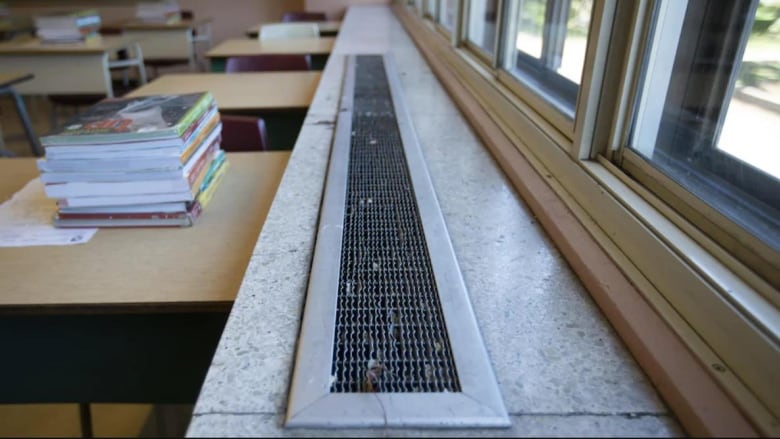Air quality at 60 schools with no ventilation system 'within the safe range,' province says
Students and teachers head back to school next week

Sixtyschools in New Brunswick still have no integrated mechanical ventilation systems as students and teachers prepare to resume in-person classes next week, with 137 active cases of COVID-19 across the province and thousands of youth unvaccinated.
Air quality tests conducted at these schools over the past several months have been"within the safe range and did not demonstrate reason for health concerns," Department of Education spokespersonFlavio Nienow said.
Engineering assessments have also been conductedto determine the feasibility of adding ventilation systems to these buildings, said Nienow. Installationat someof the schools is expected to begin in 2022, he said.
The department is working with the Department of Transportation and Infrastructure to develop the project requirements and budget for each school, based on a prioritized list.
"Due to the extensive work required, this will be a multi-year program.As such, annual funding decisions will be made through the capital budget process,"Nienowsaid in an emailed statement.
"In the meantime, we continue to work with districts to promote healthy air circulation."
Unlike the234 schools in the province that do haveintegrated ventilation systems, these schools must relyinstead on opening doors and windows to circulate air.
The department undertook the review earlier this year, based on the recommendation of a working group comprised of representatives from Public Health,WorkSafeNB, the Department of Transportation and Infrastructureand the Department of Education.
The lack of a ventilation system has also been an ongoing concern for some parents, "amplified by the COVID-19 pandemic,"David Greenfield, chair of theschool's parent school support committee, wrote in an earlier letter to the Anglophone School District West's education council.
A heat wavethat forced the closure ofschoolsearlier this summer further underlined the problem.Fans are not permitted inside schools due to concerns about spreading air particles during the pandemic.
On Tuesday, Education Minister Dominic Cardyfaced questions on social media as to why the province doesn't follow the recommendations of the U.S.-basedCenters for Disease Control and Prevention (CDC), which calls for, among other things, using "child-safe fans to increase the effectiveness of open windows."
Cardy replied bysayingHealth Canada has been "a lot more cautious on the small in-room units." New Brunswick is following most of the other guidelines laid out by the CDC, he added.
Outbreaks have been linked to poor ventilation where the virus appears to have been transmitted through aerosol production from infected individuals that became concentrated in the air over time.- Health Canada
School personnel are allowed the use of fans as long as they are alone in a classroom or office,according to Healthyand Safe Schools, the department's 2021-22 guidelines for COVID-19 and other infectious diseases.
Health Canada says "adequate ventilation can contribute to reducing the risk of COVID-19 transmission in indoor settings."
But good indoor ventilation alone cannot protect people from exposure to the virus, particularlyduring close unprotected contact andin the absence of other protective measures, it says.
"Outbreaks have been linked to poor ventilation where the virus appears to have been transmitted through aerosol production from infected individuals that became concentrated in the air over time," the agency advises.
"It is important to note that adjusting ventilation is not likely to reduce transmission between individuals in close proximity."
It recommends ventilating a room to replace indoor air with outdoor air.
"This will dilute and replace any air contaminated with SARS-CoV-2 virus or other air pollutants."
Asked for Public Health's position on students and teachers of the 60 schools without adequate ventilation returning to class, Dr. CristinMuecke, deputy chief medical officer of health, said officials continue to work with the Department of Education.
"We continue to work on this issue and provide advice, look at the situation in the schools," she told CBCduring the COVID briefing last Thursday.
"This is one of several layers of protection that can be applied, whether it's in schools or in other buildings that have ventilation. And so we're looking to optimize as much as possible, understanding that is just one piece of the puzzle."
The department allocated a total of $200,000 in its 2021-22 capital budget to complete air quality testing and conduct engineering assessments.












_(720p).jpg)


 OFFICIAL HD MUSIC VIDEO.jpg)
.jpg)



























































































